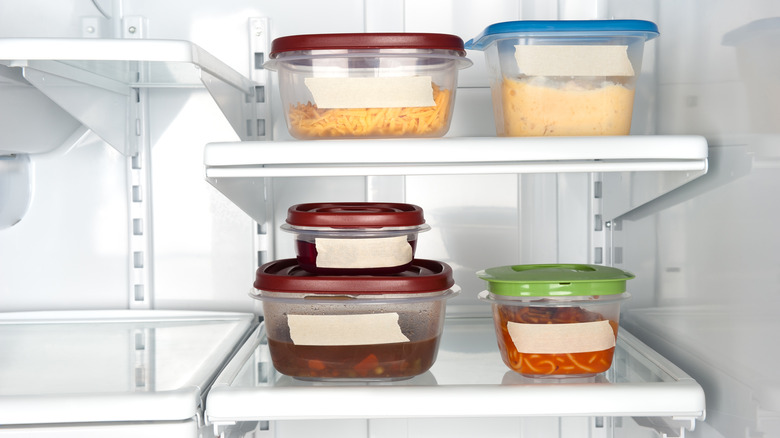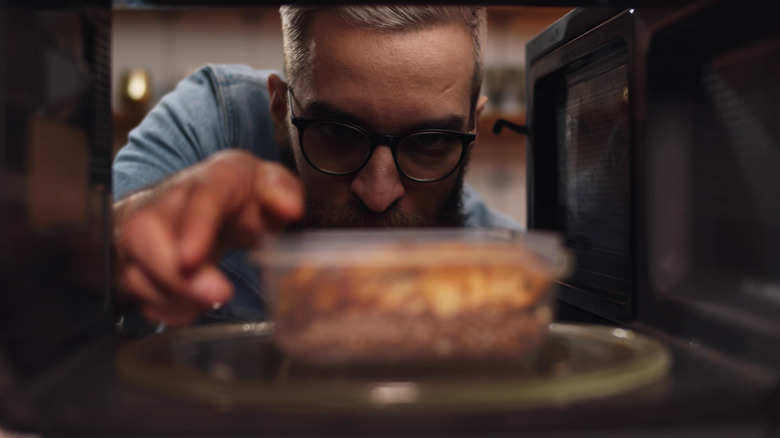Why You Shouldn't Reheat Leftovers More Than Once
Nothing makes lunch easier than leftovers. On those occasions you order or prepare more food than you can possibly eat in one sitting, the obvious solution is to eke another meal out of it and pop it in the refrigerator for the next day. But what if you finish that meal and still have some food leftover that you don't want to waste? Is it possible to re-reheat your two-day-old pasta? Technically, yes, but it is not an ideal plan.
According to the U.S. Department of Agriculture, refrigerated leftovers can be safely reheated within three to four days, though BBC Good Food recommends that leftovers be eaten from the refrigerator within two. Each time the food is reheated to 165 F it can safely be stored for an additional three to four days, however, each reheating will likely diminish the quality of the food, so it is best to keep this to a minimum. Because of these diminishing returns, if you are planning on eating the entirety of your leftover pasta or soup within a few days, it's probably best to simply dish out the portion you want and heat it up separately instead of reheating and re-chilling the entire container multiple times. You can also turn your leftovers into a new dish. Meatloaf can be turned into meat sauce, asparagus becomes soup, and leftover rice can be repurposed into a number of dishes, like risotto or fried rice.
There's an increased risk of food poisoning
While the only danger of reheating food multiple times is the possibility of significantly less tasty lunches, that only applies if the food is continuously handled properly. BBC Good Food advises that you shouldn't reheat food more than once because repeatedly changing temperatures provide more opportunities for bacteria to grow and cause food poisoning.
In order to avoid this possibility, Good Food recommends heating food to the aforementioned 165 F for at least two minutes and double-checking that it is evenly heated throughout, which might mean stopping your microwave part-way through its cook time to stir your dish. If you are planning on re-reheating, the Takeout says to make sure you don't let the reheated food sit out too long. Room temperature food is more prone to developing bacteria, so once you've taken what you want, make sure to get the rest back in the refrigerator quickly. If the leftovers were frozen before you reheated them, Good Food also notes that you should never put them back in the freezer, but in the chilled refrigerator.
These guidelines should allow you to safely reheat your enormous dinner several times to get you through the week of lunches, but always exercise caution, and check about specific ingredients if you are uncertain. Some ingredients like rice or mushrooms can be particularly prone to causing food poisoning so sometimes you might be better off just prepping one more fresh lunch than risking it.

